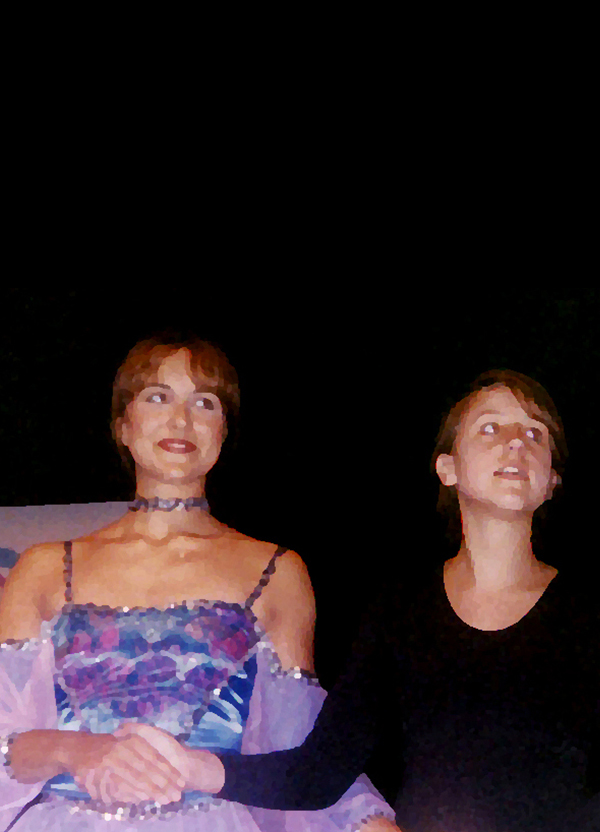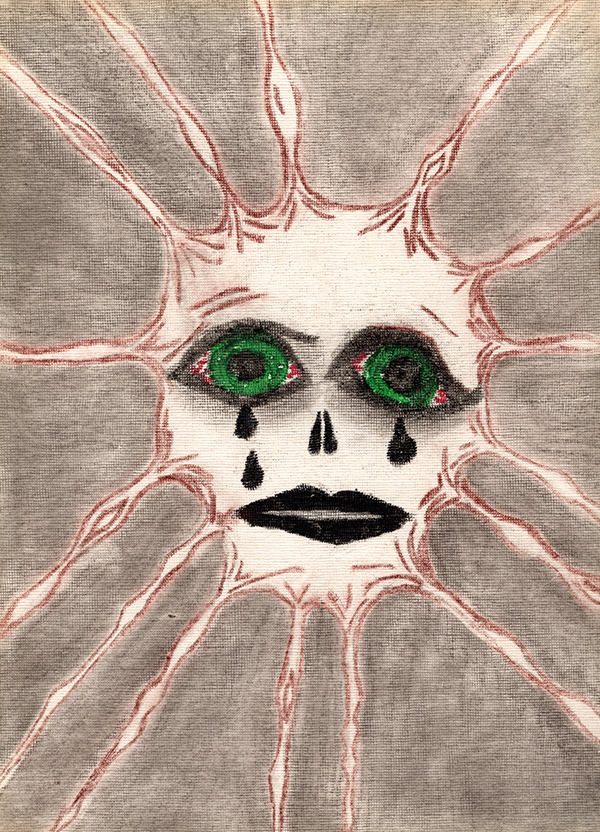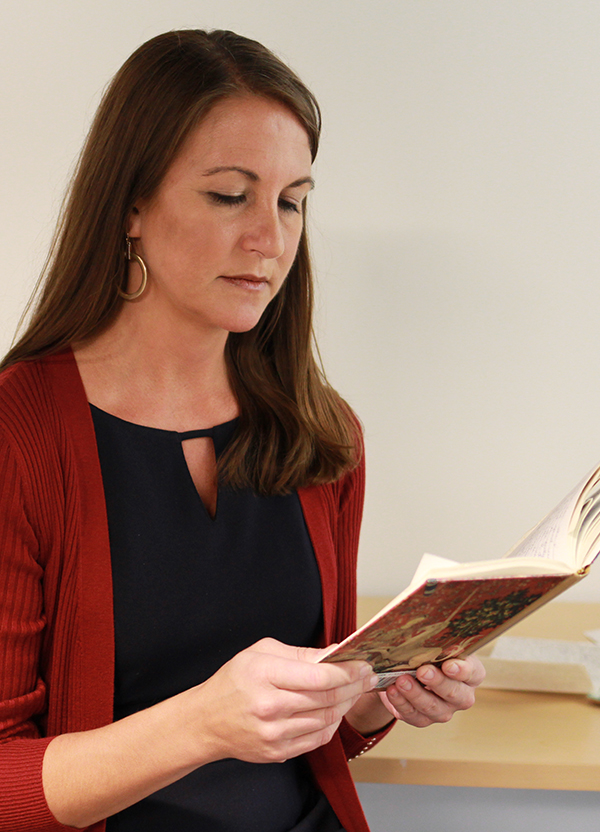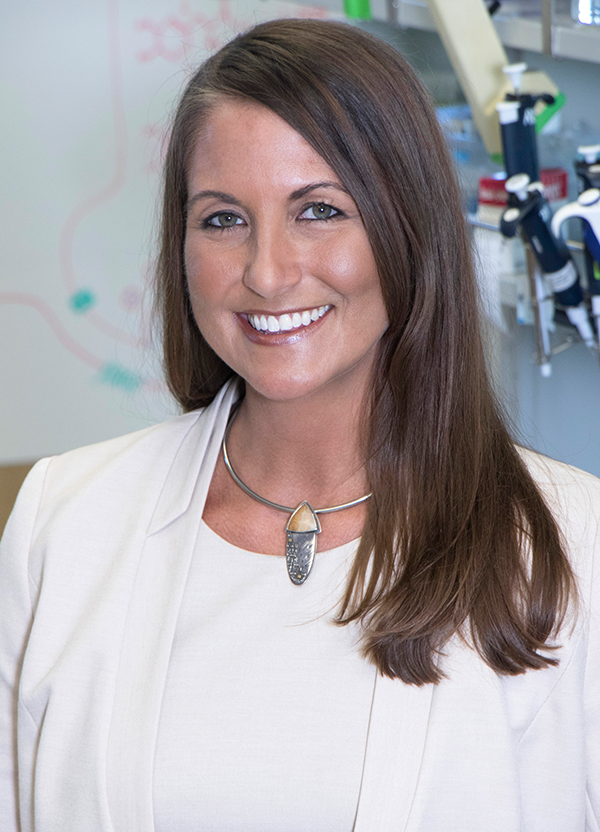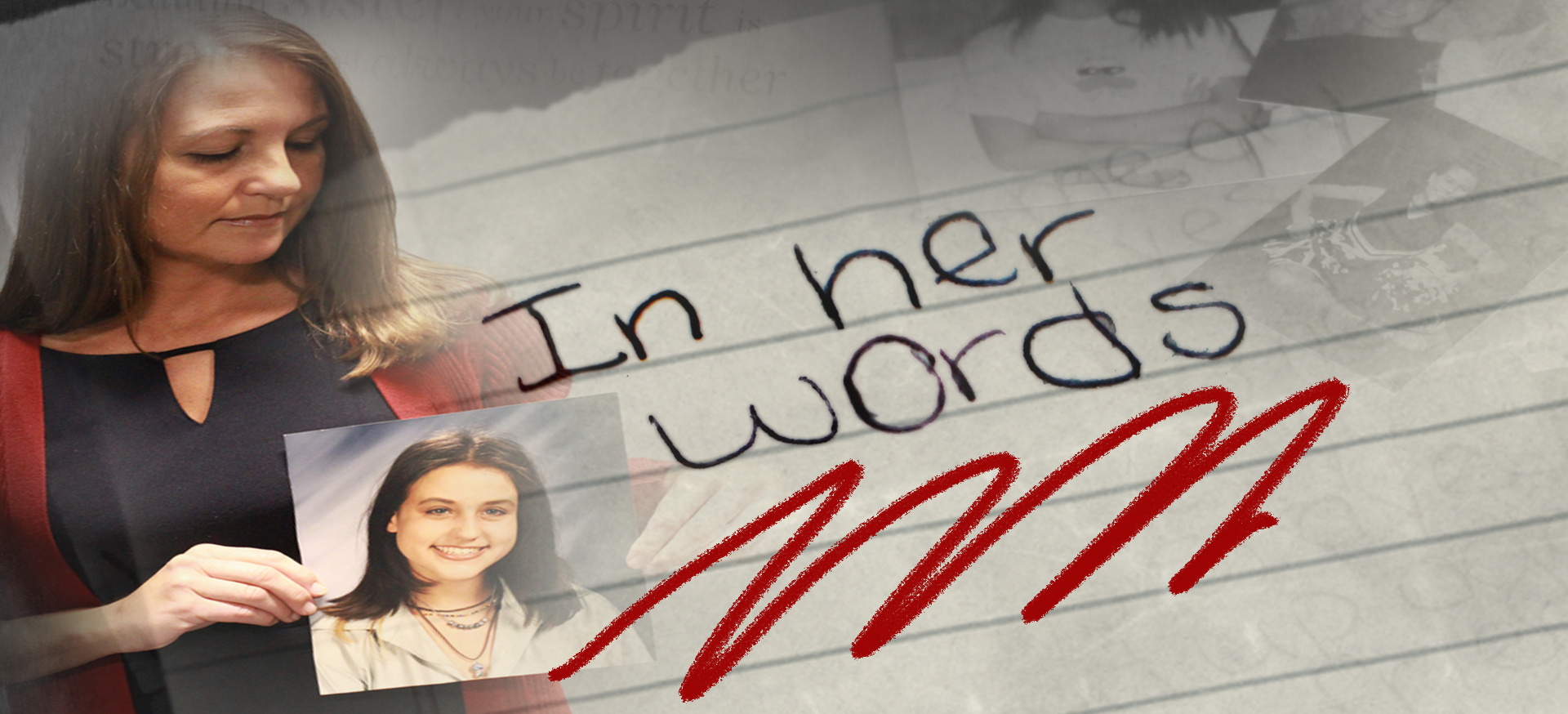A Crossroad: Lessons from Life and the Brain
FAU's research impacts communities near and far. Sometimes the genesis of our faculty members' research is deeply personal. That's the case with Nicole Baganz, Ph.D., director of community engagement and programming at FAU's Brain Institute and research assistant professor in the College of Medicine. She completed her postdoctoral fellowship at Vanderbilt University. Here, she shares her story about what sparked her neuroscience career and what inspires her to share her expertise with the community.
In Her Words
Sometimes our path in life takes a sharp turn
My path took one of those turns when I was an undergraduate student - the day I received the phone call that my sister died from a heroin overdose. My sister's life, and death at 18, fueled my desire to pursue a career in neuroscience research. I immersed myself in the world of science and academia to investigate the basic biology of mental disease and develop new treatments for devastating psychiatric disorders.
I came from a family of five, three kids. I was the oldest. My brother was in the middle and sister was the youngest. We had a lot of fun together. We were very close. We had family night Fridays where every single person in the family got to choose something they wanted to do. We'd all go out as a family and do that together. We made many trips to Florida from Wisconsin. We were beach babies. We loved the water and building sand castles.
Around age 12, my sister started acting out a bit. We had a family meeting, and my parents said we were going to have family counseling sessions. It spiraled from there. By the age of 13, she was doing heroin, acid, smoking pot, drinking and running away constantly.
By the time I obtained my Ph.D. in physiology, I had become fluent in scientific culture. In science, attachment of any emotion to an experiment outcome is strictly prohibited. The reported outcome must be the true result, not the desired or expected result. In life, however, it can be difficult - if not impossible - to keep emotion and logic separate. My own family life seemed very illogical and was steeped in emotion. Therefore, I found it helpful to use the scientific method to write about my experiences that defied investigation. I composed a story that won first place for non-fiction in Vanderbilt's magazine's writing contest.
I was initially afraid to share my sister's story because of the dichotomy between my scientific career and personal experiences outside of the lab. Would revealing such private information jeopardize my career in a field where there is a solid separation between fact and emotion?
When the article was published, I was overwhelmed by the outpouring of emails and messages I received from scientists, researchers, clinicians and others who shared their own stories with me. They thanked me for having the courage to write an honest and moving article.
I was relieved that I wasn't alone in my struggle to live a "normal," healthy life while dealing with a mentally ill family member. I found that by sharing my story, others felt safer to share their own stories with me. I have always been keenly aware of the unspoken, canyon-sized gap that exists between science and the "rest of the world," and hearing prominent scientists and clinicians describe their own heartbreak and resulting motivation helped me realize how compassionate scientists truly are as human beings. Through these experiences, I became interested in pursuing and promoting public outreach to bridge the gap between scientists and the public. I immersed myself in neuroscience conversations with everyone I met outside of the lab.
Would revealing such private information jeopardize my career in a field where there is a solid separation between fact and emotion?
Sometimes our career path takes a turn
I expected a neuroscientist's "nerd" talk to be immediately shut down as I tried to engage with folks outside of the lab. However, I unanimously found the opposite response. Every person I've spoken with has had his or her own personal story about how mental illness has touched his or her life. In these conversations, I was surprised to find that people were eager, even hungering, for scientific knowledge about the brain.
I discovered that people know there are different regions in the brain that control physiological processes and behavior. Where people often struggle is with the visualization of neurons and their circuitry map. The concept that neuronal circuitry can be altered by simple choices that we make every day boggles their brains.
Therefore, I begin my non-scientific talks by introducing brightly colored images of neurons and their circuitry. Using a roadway analogy, I liken neurons to roads that connect cities in different regions of the country. To try to dispel the myth that neurons are static, I explain that roadways can be dirt roads or super-highways, and like roadways, neurons are always under construction - throughout their entire lifespan. Neuroscientists and the public travel a two-lane highway together, and it is the responsibility of both parties to work on meeting at a crossroad. Through outreach efforts, roadblocks are removed, and travel continues to flow.
I am thrilled that my path has brought me to FAU, where the institute is heavily engaged in the university's new Addiction Research Collaborative. We're working with community partners to tackle the opioid epidemic. I'm speaking with chambers of commerce and other community groups and helping to develop an interactive brain museum exhibit, among other things. It is my hope this article will help the institute connect with the FAU community so we may travel together along our bright path and finally meet at the crossroad.
If you would like more information, please contact us at dorcommunications@fau.edu.
